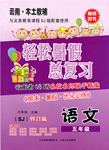
| |||||||||||||||||||||||||||||||||||||||||||||||||||||||||||||||||||||||||
 轻松暑假总复习系列答案
轻松暑假总复习系列答案科目:高中英语 来源:2004全国各省市高考模拟试题汇编(天利38套)·英语 题型:050
阅读理解
阅读下列短文,从每题所给的四个选项(A、B、C和D)中,选出最佳选项。
America is the land of the automobile. “This country has only 6 percent of the world's population out of 46 percent of the world's cars. Right now, there are 97 million privately owned cars consuming 75 billion gallons of gasoline and traveling an estimated 1,000 billion miles a year. The figures also affirm something we know every time we refill our gasoline tank. The automobile is a very thirty piece of technology. Of the total petroleum supply in the United States, 30 percent goes to quench that thirst. Every year for each passenger car, about 800 gal lons of gasoline are consumed.
Other aspects of our commitment to the automobile also bear mentioning here. It takes a great deal of energy to manufacture one automobile - about 150 million BTU's of energy. This is equivalent to 1,200 gallons of gasoline, enough to run a car for about 1,600 miles. We expend energy in the process of shipping cars from factories to showrooms, displaying them for sale and making replacement parts for repairs. One out of six jobs in the nation is associated with the automobile business. About two gallons of gasoline are consumed in the process of making every ten gallons that are pumped into an automobile's gas tank.
Building highways and parking lots has used up much of our land. It has been estimated that we have paved over 21,000 square miles of this country's surface, most of it to accommodate the automobile. The automobile is also the largest contributor to our nation's air pollution problem and a very serious one because most of its pollutants are emitted in our large metropolitan areas.
1.To make an automobile, we need ________.
[ ]
A.75 billion gallons of gasoline
B.150 million BTU's of energy
C.1,200 gallons of gasoline
D.800 gallons of petroleum
2.The underlined word “quench” in this passage means ________.
[ ]
3.The main idea of this passage is ________.
[ ]
A.what the automobile costs and brings
B.how to make the automobile
C.the energy the automobile costs
D.the problem the automobile has brought
查看答案和解析>>
科目:高中英语 来源:广东省广州六校2012届高三第二次联考英语试题 题型:050
| |||||||||||||||||||||||||||||||||||||||||||||||||||||||||||||||||||||||||
查看答案和解析>>
湖北省互联网违法和不良信息举报平台 | 网上有害信息举报专区 | 电信诈骗举报专区 | 涉历史虚无主义有害信息举报专区 | 涉企侵权举报专区
违法和不良信息举报电话:027-86699610 举报邮箱:58377363@163.com